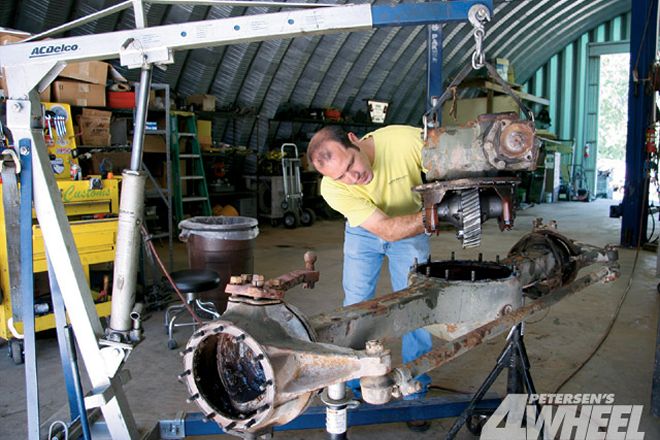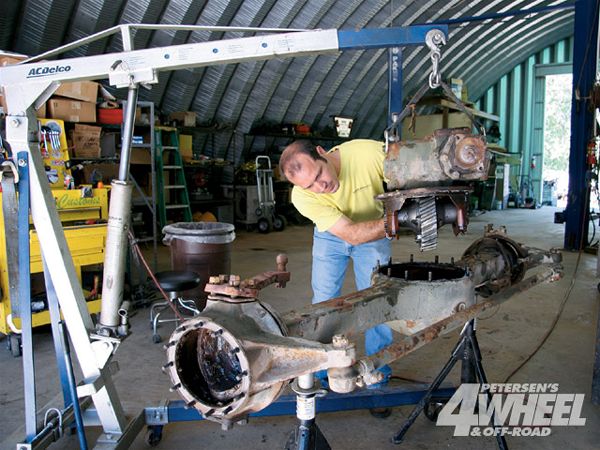
 Ali Mansour
Brand Manager, 4WD & Sport Utility
Ali Mansour
Brand Manager, 4WD & Sport Utility
 We can't stress how heavy these axles are. Do yourself a favor and buy an engine hoist. Hoists are surprisingly inexpensive and very useful for jobs like this.
We can't stress how heavy these axles are. Do yourself a favor and buy an engine hoist. Hoists are surprisingly inexpensive and very useful for jobs like this.
Riding high atop the axle food chain, the 2 1/2-ton Rockwell axle is about as tough as it gets for guys craving huge tires and big horsepower. Over the past decade, these axles have shed their monster-truck-only stigma and have shown up under buggies and local mud boggers alike. Compared to a more traditional axle set, the Rockwells are virtually untouched when it comes to cost and strength-especially when you consider that a complete set of Rockwells can run you less than the cost of one Dana 60 front axle.
Now don't get us wrong. We know there are two sides to every coin, and when you start adding the massive weight (approximately 700 pounds without the drum brakes) and the extremely tall third member (a little over 9 inches from the top of the axletube), fitting these massive hunks of metal under a rig becomes a real challenge.
For us they are the perfect axles for building a massive mud machine. The third member keeps the driveline high, which equals better clearance and less driveshaft angle, while the 6.72 ratio makes turning 44-plus-inch tires effortless. Built with 3.5x3.5-inch square axletubes, the top-loader axles make for a solid and fabricator-friendly build platform. And the best part is they are a simple axle that usually requires very little in the way of new parts to get them rolling again. In fact, the set that we picked up from Red River Parts and Equipment-and tore down with the Rockwell gurus at Old Town Customs-only required one new hub bearing and race! Not bad, considering these axles had been lying in a field for who knows how long.
Take a look at the inner workings of the Rockwell axle, and be sure to check out next month's issue, where we start the axle rebuild as the first step in our new project affectionately titled Heavy Metal Mudder.






 PhotosView Slideshow
PhotosView Slideshow






